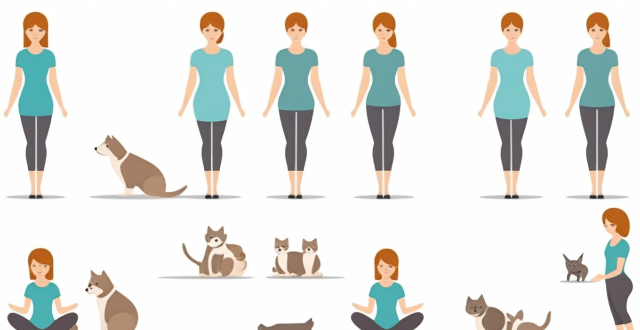Yoga poses can be modified for pregnant women to ensure safety and comfort. It's important to avoid overstretching, lying on the back or belly, and balance poses that put pressure on the abdominal area. Props like blocks and straps can help support the body and make poses more accessible. Examples of modified yoga poses include cat-cow pose, downward-facing dog, warrior II, child's pose, seated forward bend, and corpse pose. Always consult with a prenatal yoga instructor or healthcare provider before starting any new exercise routine during pregnancy.

Can Yoga Poses Be Modified for Pregnant Women?
Yoga is a popular form of exercise that offers numerous physical and mental benefits. For pregnant women, yoga can help reduce stress, improve sleep, and increase strength and flexibility. However, it's important to note that not all yoga poses are suitable for pregnant women. In this article, we will discuss how yoga poses can be modified for pregnant women to ensure their safety and comfort during practice.
Understanding the Importance of Modifications
Safety First
During pregnancy, a woman's body undergoes various changes, including increased weight, shifts in center of gravity, and loosening of joints due to hormonal changes. These factors make it essential to modify certain yoga poses to avoid strain or injury.
Listening to Your Body
It's crucial for pregnant women to listen to their bodies and respect their limits while practicing yoga. If a pose doesn't feel right or causes discomfort, it should be avoided or modified accordingly.
General Guidelines for Modifying Yoga Poses During Pregnancy
Avoid Overstretching
Pregnancy hormones like relaxin cause ligaments to loosen, increasing the risk of overstretching or tearing. Therefore, it's important to avoid deep stretches and maintain a comfortable range of motion.
Stay Grounded
Balance can be affected during pregnancy, so it's best to focus on standing poses that keep both feet on the ground. Avoid poses that require balancing on one leg or putting excessive weight on the abdominal area.
Avoid Lying on the Back or Belly
After the first trimester, lying flat on your back or directly on your belly should be avoided as it can put pressure on major blood vessels and organs, potentially causing discomfort or reduced circulation.
Use Props
Props such as blocks, straps, and blankets can help support the body and make poses more comfortable and accessible. They also allow for modifications to accommodate changing body shapes and sizes.
Examples of Modified Yoga Poses for Pregnant Women
Cat-Cow Pose (Marjaryasana-Bitilasana)
- Original Pose: This flow between two poses helps stretch the spine and warm up the body.
- Modification: Instead of moving between arching and rounding the spine, focus on gentle cat tilts to avoid compression in the abdominal area. Keep the movement minimal and controlled.
Downward-Facing Dog (Adho Mukha Svanasana)
- Original Pose: A classic yoga pose that stretches hamstrings, calves, and strengthens arms and shoulders.
- Modification: Widen your stance to reduce intensity on the abdominal area. You can also use blocks under your hands for added support and to lessen the angle of the pose.
Warrior II (Virabhadrasana II)
- Original Pose: A standing pose that strengthens legs, opens hips, and improves stamina.
- Modification: Shorten your stance slightly to accommodate your changing body shape. Ensure your front knee is aligned directly over your ankle to prevent strain. Use blocks for arm support if needed.
Child's Pose (Balasana)
- Original Pose: A resting pose that stretches the lower back and hips while relaxing the body.
- Modification: Place a bolster or folded blankets under your torso to elevate it slightly, reducing pressure on the belly. You can also widen your knees further apart to make room for your belly.
Seated Forward Bend (Paschimottanasana)
- Original Pose: A seated pose that stretches the entire backside of the body.
- Modification: Instead of folding forward from the hips with straight legs, bend your knees and place blocks or cushions under your knees for support. This allows you to maintain length in your spine without compressing your belly.
Corpse Pose (Savasana)
- Original Pose: A relaxation pose where you lie flat on your back, allowing your body to rest fully.
- Modification: After the first trimester, use a semi-reclined position with a pillow under your head and upper back for support. You can also place a rolled-up blanket or bolster under your knees for additional comfort.
Conclusion
Yoga can be a wonderful practice during pregnancy when done safely and with proper modifications. By following these guidelines and examples, pregnant women can continue to enjoy the benefits of yoga while staying comfortable and protecting their changing bodies. Always consult with a prenatal yoga instructor or healthcare provider before starting any new exercise routine during pregnancy.